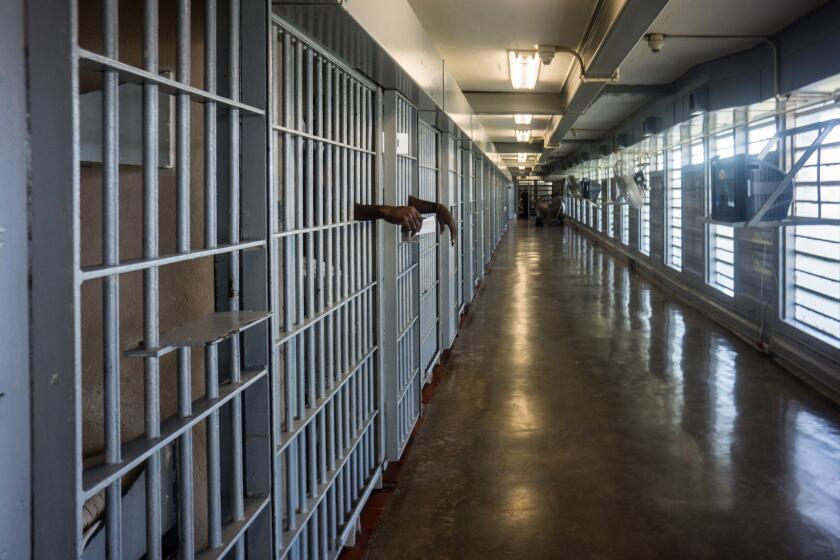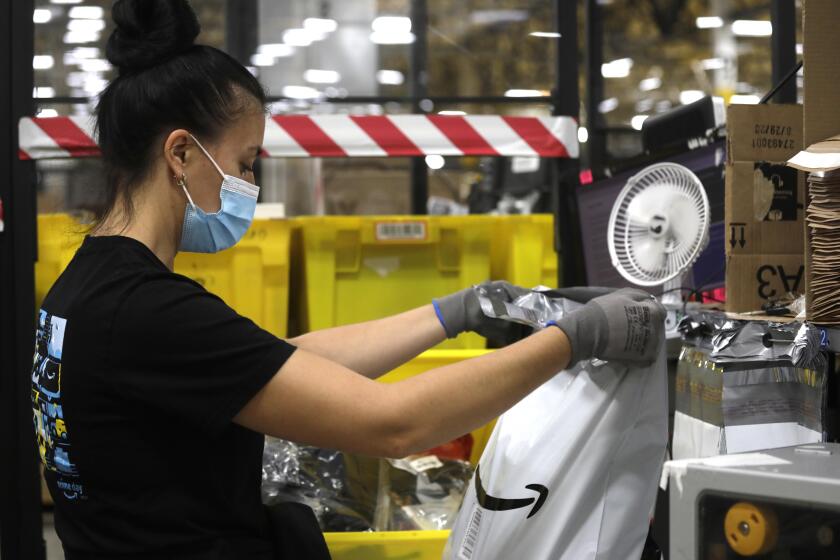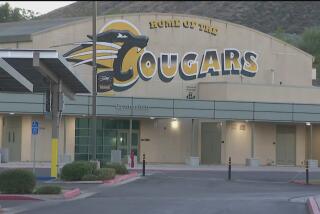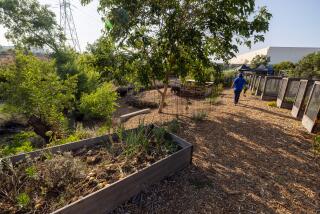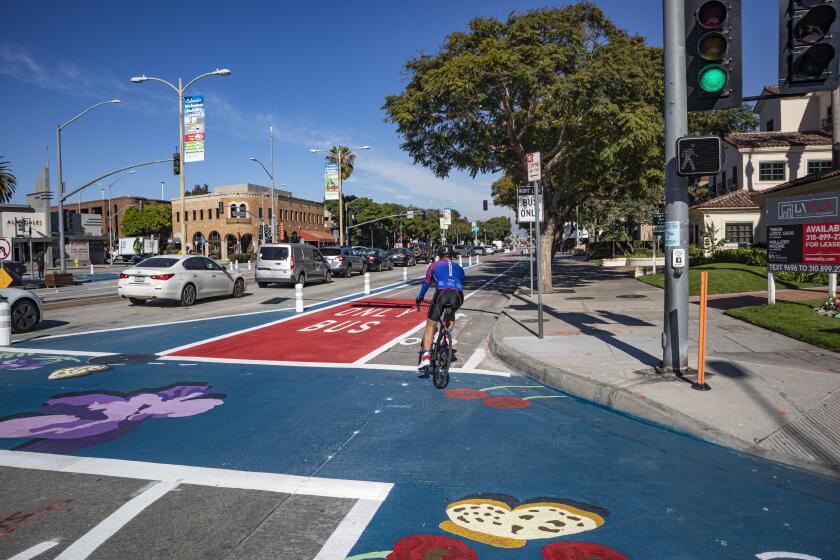California needs to protect schoolchildren from extreme heat
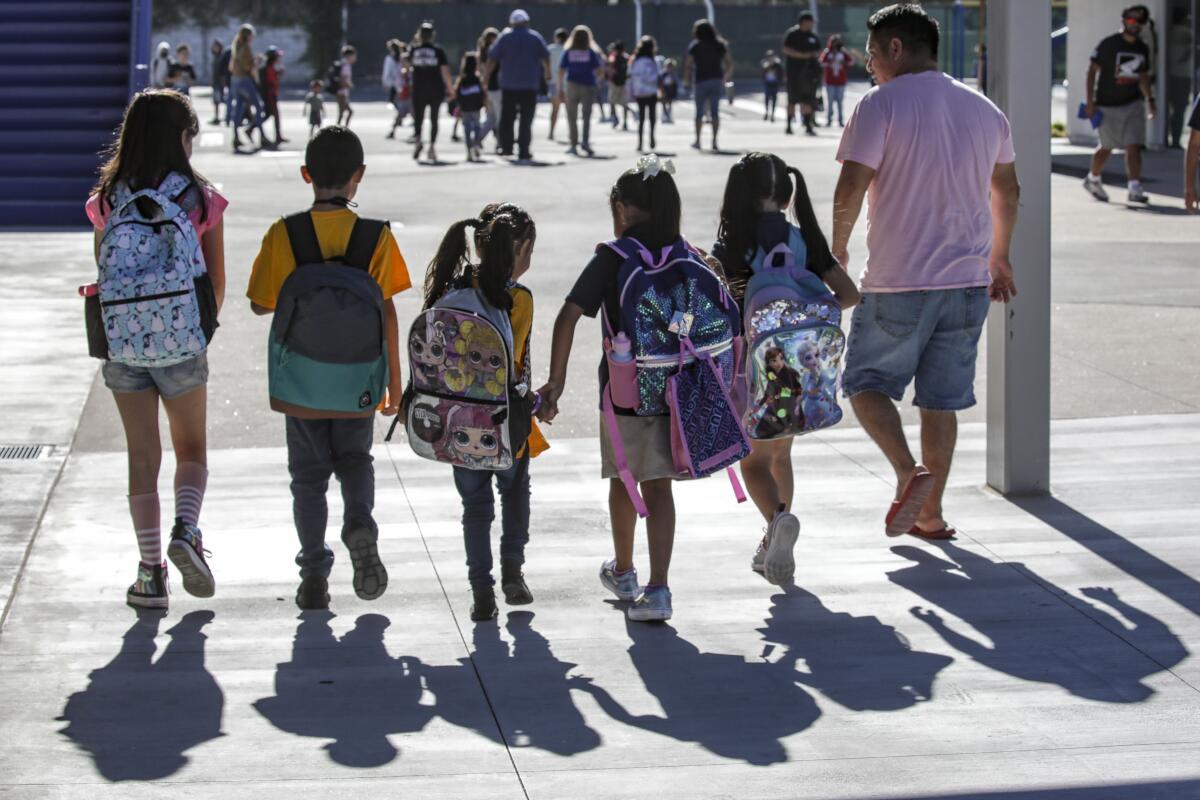
- Share via
Children are more vulnerable than adults to extreme heat, but at too many California schools authorities just aren’t moving with urgency to protect them from a fast-warming climate.
It doesn’t help that the state has an appalling lack of policies to protect schoolchildren from dangerous temperatures. Under California law, K-12 classrooms aren’t subject to any upper temperature limits and they aren’t required to have air conditioning. So during some of the worst heat of the year, as kids are returning to school in the fall, temperatures inside their classrooms can reach triple digits, triggering nosebleeds, headaches, vomiting and heat exhaustion.
There’s often little relief outside because so many schoolyards are like parking lots, without shade, trees or natural landscaping and covered in asphalt that can heat up to a skin-burning 145 degrees. The consequences of overexertion can be fatal. A 12-year-old boy collapsed and died last month during his middle school PE class during a heat wave.
State legislators do not have the luxury of taking a year off from fighting the climate crisis and should muster the votes to pass what remains of a three-bill climate accountability package before the end of the session.
Children are especially at risk because their bodies warm up faster, they take longer to start sweating, are more susceptible to dehydration and have more trouble regulating their body temperature. They also spend more active time outside than adults. They are largely dependent on authority figures like parents, teachers and administrators to take steps to cool them down.
State lawmakers have the opportunity to start reducing risks in classrooms and schoolyards, during recess, PE and sports by passing a few pieces of legislation still pending in Sacramento.
These inhumane conditions aren’t just threatening the health of California’s 6 million public schoolchildren, they are detrimental to their learning. They also fuel the racial achievement gap for Black and Latino children who disproportionately suffer on scorching school days because they overwhelmingly live in hotter areas than white students and are less likely to have adequate air conditioning in their classrooms.
Cruel summer heat turns non-air-conditioned concrete prisons into ovens that cook the people inside alive. This is not justice. It is inhumane.
That’s unacceptable and increasingly dangerous as climate change intensifies heat waves and pushes them longer into the school year. California has to do better.
State legislators this year introduced half a dozen bills focused on extreme heat in schools, and a few are still in play as the legislative session draws to a close. They are relatively modest measures, but they’re a start.
One bill, AB 384, would require the state Department of Education to come up with recommendations for maximum indoor air temperatures in public schools and conduct an inventory of their heating and cooling systems. SB 515 would cut red tape for the installation of shade structures on school campuses, simple cooling projects that under current law can be subject to unnecessary costs and delays.
Temperatures continue to rise thanks to climate change. But state officials have moved glacially slow to put protections in place for people toiling during the summer at indoor workplaces like warehouses and factories.
Another one, AB 1653, would require the development of heat illness prevention standards for school athletics programs — including using more sophisticated wet bulb globe temperature readings to determine when it’s unsafe to practice or play and making cold water immersion baths available to treat athletes suffering heat exhaustion or heat stroke.
Lawmakers failed to advance other bills to address heat risks to children, including legislation that would have required master plans to make school grounds more resilient to extreme heat and statewide goals for completing schoolyard greening projects.
That’s a shame. California’s leaders need to quickly move ahead with school temperature standards and extreme heat response plans. They also need to fund projects to install or upgrade HVAC systems and insulation, remove asphalt, plant trees and set up shade structures.
Average temperatures in L.A. County have already increased by about 2 degrees Fahrenheit since many of its aging school campuses were built decades ago. Much of the school landscape, from the buildings to the asphalt-dominated play areas that surround them, was designed for a climate that just doesn’t exist anymore. In fact, it is only getting hotter, as humans continue to burn fossil fuels and spew greenhouse gas pollution.
What does it say about California’s priorities if our response to climate change doesn’t include something as basic as making it safe for kids to learn and play? Schools ought to be refuges from extreme heat, and it’s time for lawmakers to start doing something about it.
More to Read
A cure for the common opinion
Get thought-provoking perspectives with our weekly newsletter.
You may occasionally receive promotional content from the Los Angeles Times.

